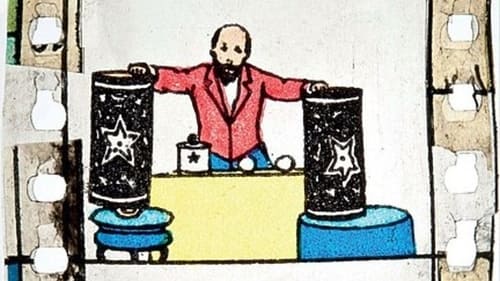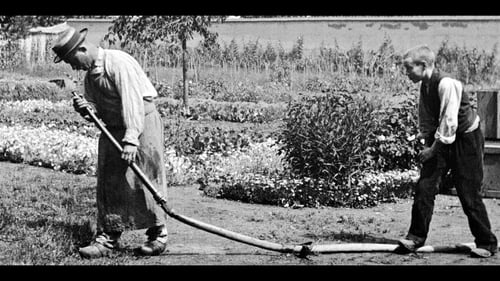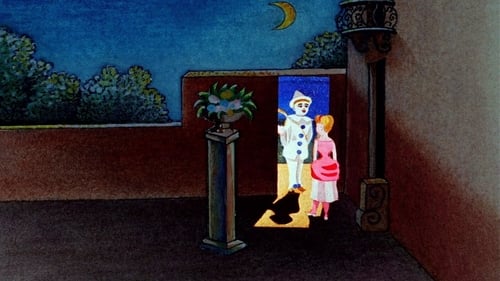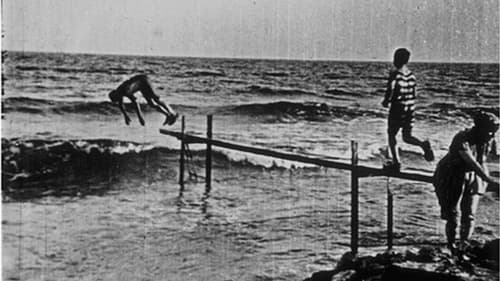The Magic Rosette (1878)
Genre : Animation
Runtime : 1M
Director : Émile Reynaud
Synopsis
Praxinoscope strip of a shifting rosette. Series 2, number 5.

Praxinoscope strip of a shifting rosette. Series 2, number 5.

Praxinoscope animation of a green-suited boy wearing a drum and cymbal. Series 1, number 10

A patchwork of the first animated movies from the collections of La Cinémathèque française : Stroboscopic Discs (1833), Zoetropes (since 1867), Reynaud's Praxinoscope (1878-1879), plates of Muybridge and Anschütz (1880-1890), an unseen Marey's chronophotography (1889), Chromolithographs films (since 1897), including one inspired by the second Georges Méliès' film, "Une séance de prestidigitation" (1896), with a photographic version, unseen until now.

Early Praxinoscope strip showing a girl dancing on a tightrope. Series 1, Number 7.

Praxinoscope reel, Series 1, number 1

Praxinoscope of a girl in a blue dress skipping rope. Series 1, number 9

Praxinoscope animations of a girl in a blue dress bouncing a shuttlecock on a badminton racket. Series 2, number 2

Praxinoscope animation of a butterfly fluttering about a flower. Series 2, number 6.

Praxinoscope animation of a man spinning around a trapeze. Series 2, number 7.

Praxinoscope animation of a girl charming a flock of birds. Series 3, number 1.

Praxinoscope animation of two children playing on a homemade teeter-totter. Series 3, number 2.

Praxinoscope animation of a man sitting backwards in a char smoking a cigar, while a dog jumps up at him. Series 3, number 5.

Praxinoscope animation of a juggler balancing a spinning plate on their nose. Series 1, number 2.

Praxinoscope animation of a child laying down balancing a drum upon his upraised legs. Series 1, number 3.

Praxinoscope animation of a girl in a blue dress blowing soap bubbles. Series 1, number 5.

Praxinoscope animation of a chef rotating meat on a spit while spooning drippings over it. Series 1, number 6.

Praxinoscope animation of a woman feeding chickens. Series 1, number 4

Praxinoscope animation of a swimmer. Series 2, number 8.

Praxinoscope animation of an equestrian riding. Series 3, number 8.

Praxinoscope animation of a boy holding a hoop for two trained dogs to leap through. Series 1, number 8.

Le Manoir du diable or The House of the Devil, released in the United States as The Haunted Castle and in Britain as The Devil's Castle, is an 1896 French short silent film directed by Georges Méliès. The film tells the story of an encounter with the Devil and various attendant phantoms. It is intended to evoke amusement and wonder from its audiences, rather than fear. However, because of its themes and characters, it has been considered to technically be the first horror film, as well as potentially the first vampire film. The film opens with a large bat flying into a medieval castle, circling a room, and then suddenly changing into the Devil. Producing a cauldron, Mephistopheles conjures up a young girl and various supernatural creatures in an effort to scare two cavaliers, eventually succeeding in causing one to flee. Ultimately the remaining cavalier is confronted face-to-face by the Devil before reaching for and brandishing a large crucifix, which causes the Devil to vanish.

Professor Barbenfouillis and five of his colleagues from the Academy of Astronomy travel to the Moon aboard a rocket propelled by a giant cannon. Once on the lunar surface, the bold explorers face the many perils hidden in the caves of the mysterious planet.

A pre-cinematograph colour animation of the monkey playing his violin.

A father, a mother and a baby are sitting at a table, on a patio outside. Dad is feeding baby his lunch, while mum is serving tea.

The last remaining production of Le Prince's LPCC Type-16 (16-lens camera) is part of a gelatine film shot in 32 images/second, and pictures a man walking around a corner. Le Prince, who was in Leeds (UK) at that time, sent these images to his wife in New York City in a letter dated 18 August 1887.

A gardener is watering his flowers, when a mischievous boy sneaks up behind his back, and puts a foot on the water hose. The gardener is surprised and looks into the nozzle to find out why the water has stopped coming. The boy then lifts his foot from the hose, whereby the water squirts up in the gardener's face. The gardener chases the boy, grips his ear and slaps him in his buttocks. The boy then runs away and the gardener continues his watering. Three separate versions of this film exist, this is the original, filmed by Louis Lumière.

One night, Arlequin comes to see his lover Colombine. But then Pierrot knocks at the door and Colombine and Arlequin hide. Pierrot starts singing but Arlequin scares him and the poor man goes away.

Likely in June 1897, a group of people are standing along the platform of a railway station in La Ciotat, waiting for a train. One is seen coming, at some distance, and eventually stops at the platform. Doors of the railway-cars open and attendants help passengers off and on. Popular legend has it that, when this film was shown, the first-night audience fled the café in terror, fearing being run over by the "approaching" train. This legend has since been identified as promotional embellishment, though there is evidence to suggest that people were astounded at the capabilities of the Lumières' cinématographe.

Several little boys run along a pier, then jump into the ocean.











